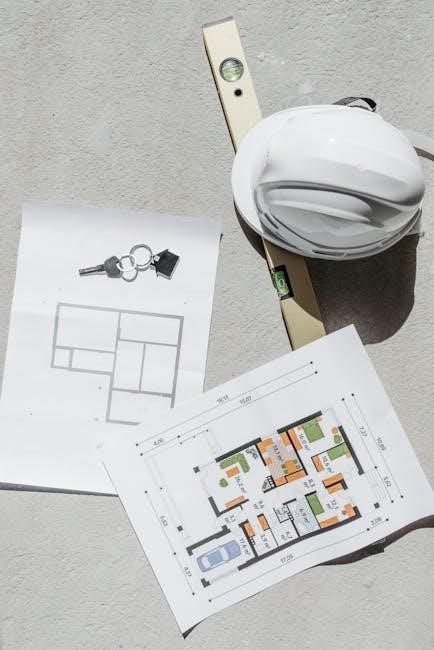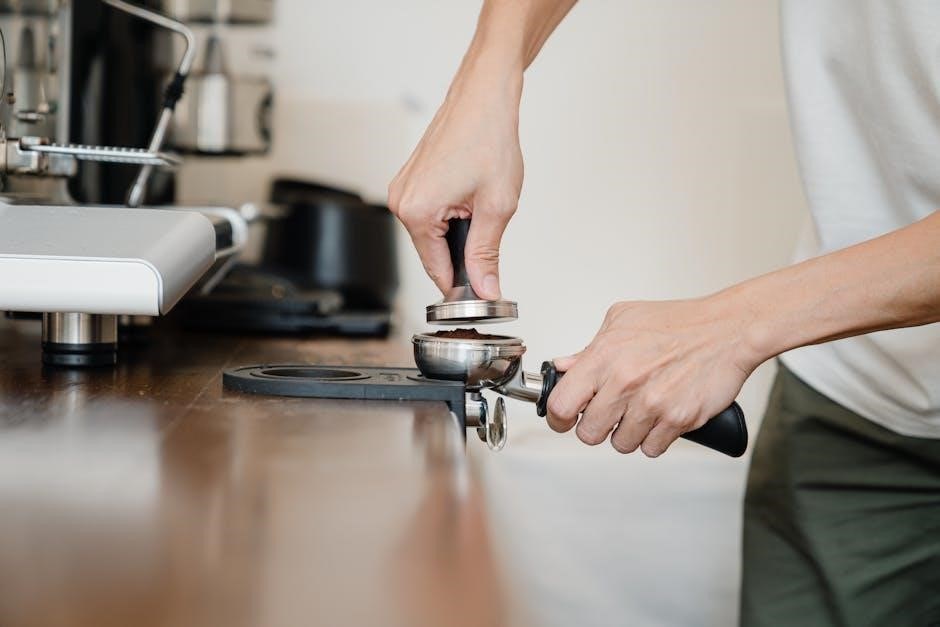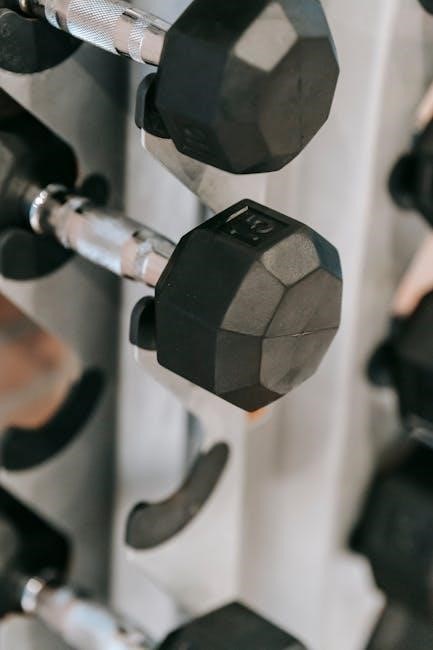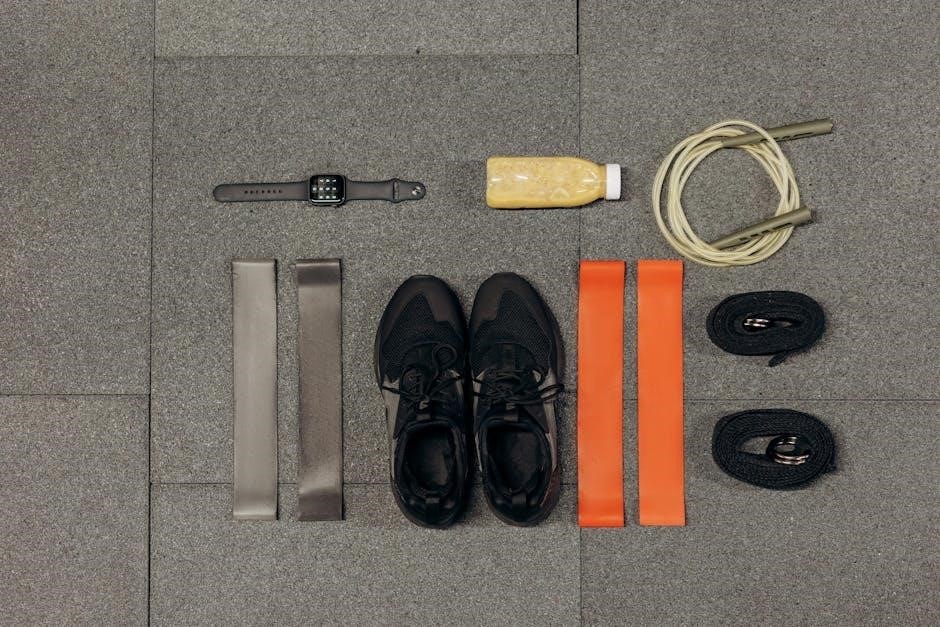French Cleat Tool Holder Plans PDF: A Comprehensive Guide

This comprehensive guide explores the world of French cleat systems for workshop organization, offering downloadable PDF plans․ Discover the benefits of using French cleats to create custom tool holders, optimizing space and accessibility․ From basic cleats to specialized jigsaws, drill holders, and router shelves, unlock the potential for a clutter-free workspace․
French cleat systems represent a highly versatile and customizable approach to workshop organization and tool storage․ At their core, these systems consist of two interlocking cleats, typically crafted from wood, with angled faces that allow for secure and easily adjustable mounting․ One cleat is affixed horizontally to the wall, creating a stable rail, while the mating cleat is attached to the back of a tool holder, shelf, or cabinet․
This simple yet ingenious design enables users to effortlessly hang and rearrange items on the wall, adapting to evolving storage needs․ The 45-degree angle ensures a strong and reliable connection, capable of supporting substantial weight․ French cleat systems offer a modular solution, allowing for the creation of custom tool storage configurations tailored to specific tools and workspace layouts․
Their adaptability extends beyond workshops, finding applications in laundry rooms, living spaces, and various storage environments․ The ease of installation and reconfiguration makes French cleats an ideal choice for both seasoned woodworkers and DIY enthusiasts seeking an efficient and organized workspace․ With readily available plans and resources, embarking on a French cleat project empowers individuals to transform cluttered areas into streamlined, functional spaces․
Benefits of Using a French Cleat System for Tool Storage
French cleat systems provide numerous advantages for organizing tool storage in workshops and garages․ The most prominent benefit is their exceptional versatility․ The modular nature of the system allows for easy reconfiguration of tool holders and shelves, adapting to changing needs and tool collections․ This flexibility ensures that your storage solution remains optimized as your workshop evolves․
Another key advantage is the efficient use of vertical space․ By utilizing wall space, French cleat systems free up valuable floor area, creating a more spacious and organized workspace․ This is particularly beneficial in smaller workshops where space is limited․ Additionally, the system promotes easy access to tools․ With tools clearly visible and readily accessible, you can quickly locate and retrieve the necessary implement for any task, saving time and reducing frustration․
Furthermore, French cleat systems offer a customizable and aesthetically pleasing storage solution․ You can design and build tool holders tailored to specific tools, ensuring a snug and secure fit․ The clean and organized appearance of a French cleat wall enhances the overall look of your workshop, creating a more professional and inviting environment․ The ease of installation and adaptability make French cleats a compelling choice for any woodworker or DIY enthusiast seeking an efficient and visually appealing tool storage solution․
Essential Tools and Materials for Building French Cleat Tool Holders
Constructing effective French cleat tool holders requires a selection of essential tools and materials․ For cutting the wood components, a table saw or circular saw is crucial for creating precise and consistent cleats and holder pieces․ A miter saw can also be helpful for making accurate angled cuts․ To assemble the tool holders, you’ll need a drill with various drill bits for creating pilot holes and mounting hardware․ A countersink bit ensures screws sit flush with the surface․
Clamps are indispensable for holding pieces securely while gluing and screwing them together․ A measuring tape, square, and pencil are necessary for accurate layout and marking․ For fastening components, wood glue, brad nails, and screws are commonly used․ The primary material for building French cleat tool holders is plywood, typically 3/4″ thick, offering a balance of strength and stability․
Additional materials may include scrap pieces of wood for customizing tool holders, sandpaper for smoothing edges, and a finish (paint, stain, or varnish) to protect the wood and enhance its appearance․ Safety glasses and hearing protection are paramount when operating power tools․ Having these tools and materials readily available will streamline the building process and ensure the creation of durable and functional French cleat tool holders․
Step-by-Step Guide to Building a Basic French Cleat
Creating a basic French cleat is a straightforward process that forms the foundation of your tool organization system․ Begin by selecting a piece of wood, typically 3/4″ plywood, ensuring it’s straight and free from defects․ Determine the desired length of your cleat, considering the size of your tool holders and the available wall space․ A common length is around 48 inches, but adjust as needed․
Using a table saw or circular saw, rip the wood to the desired width․ A width of 3-4 inches is generally suitable for wall-mounted cleats, while 2-2․5 inches works well for accessory cleats; Now, set your saw blade to a 45-degree angle․ Ensure the fence is adjusted to leave a small flat area (about 1/8 inch) at the point of the bevel․ Carefully cut along one edge of the wood, creating the angled bevel that is characteristic of a French cleat․
For the mating cleat that attaches to the tool holder, repeat the process, ensuring the bevel angle is oriented in the opposite direction․ This allows the two cleats to interlock securely․ Sand any rough edges or splinters for a smooth finish․ Your basic French cleat is now complete and ready to be attached to the wall and your tool holders․ Remember to use glue and screws for a strong and reliable connection․
Creating a French Cleat Wall: Panel Construction and Installation
Constructing a French cleat wall involves creating panels to which the cleats are attached, offering flexibility and portability․ Begin by cutting plywood sheets to your desired panel size․ Consider the overall dimensions of your wall and the tools you plan to store․ A manageable panel size is typically around 4′ x 4′, but adjust as needed․

Next, cut French cleat strips from plywood, ensuring they match the length of your panels․ Attach the cleats horizontally to the panels, spacing them evenly apart․ A spacing of 3-4 inches is common, but you can customize this based on your tool storage needs․ Use glue and brad nails to secure the cleats to the panels, ensuring they are square and aligned․
Once the panels are assembled, it’s time to install them on your wall․ Locate the wall studs and mark their positions․ Attach the panels to the studs using screws, ensuring they are securely fastened․ If your walls are concrete or block, use appropriate anchors for a secure hold․ For added protection against moisture, consider adding furring strips between the wall and the panels․ With the panels in place, your French cleat wall is ready for organizing your tools․
Designing and Building Custom Tool Holders
The beauty of a French cleat system lies in its adaptability․ Crafting custom tool holders allows you to tailor your storage to your specific collection and needs․ Start by assessing the tools you want to organize․ Consider their size, shape, and weight to determine the appropriate design for each holder․
Begin with simple designs․ For screwdrivers or chisels, drill holes in a piece of plywood and attach a French cleat․ For larger items, create cradles or supports that fit the tool’s contours․ Use scrap wood to build these holders, maximizing material usage and minimizing waste․ Ensure the holders are sturdy enough to support the weight of the tools․
Attach a French cleat to the back of each holder, ensuring it aligns properly with the cleats on your wall․ Use glue and screws to secure the cleat․ Consider adding a spacer between the holder and the cleat to provide extra stability․ Test each holder on the wall to ensure it fits snugly and securely holds the tool․ With a little creativity, you can design and build custom tool holders that perfectly organize your workshop․
Specific Tool Holder Plans: Jigsaw Holder
A jigsaw, with its unique shape and blade, requires a specialized holder․ The goal is to securely store the jigsaw while protecting the blade and preventing accidental activation․ This plan outlines a simple yet effective jigsaw holder designed for a French cleat system․
Begin by cutting a piece of plywood to the desired size․ The dimensions will depend on the size of your jigsaw․ Create a U-shaped cradle that will support the body of the jigsaw․ The cradle should be deep enough to prevent the jigsaw from tipping over․ Add a support piece at the bottom of the cradle to provide additional stability․
Cut a slot in the cradle to accommodate the jigsaw blade․ Ensure the slot is wide enough to allow the blade to slide in and out easily․ Attach a French cleat to the back of the holder, aligning it with the cleats on your wall․ Use glue and screws to secure the cleat; Consider adding a safety strap to prevent the jigsaw from falling out of the holder․ This simple jigsaw holder will keep your tool organized and readily accessible․
Specific Tool Holder Plans: Drill Holder
This section details the construction of a drill holder designed for French cleat mounting․ This drill holder will keep your drill organized and readily accessible․
Begin by selecting a suitable piece of plywood․ The size will depend on the number of drills you wish to store․ Cut the plywood to the desired dimensions; Next, create individual compartments for each drill․ This can be achieved by using dividers made from plywood or solid wood․ The dividers should be spaced according to the size of your drills․
Secure the dividers to the base using glue and screws․ Ensure the compartments are deep enough to prevent the drills from tipping over․ Add a retaining strap to each compartment to secure the drills in place․ Cut a French cleat to the appropriate length and attach it to the back of the holder․ Use glue and screws to ensure a strong bond․ Consider adding a small shelf above the drill compartments to store drill bits and accessories․ This drill holder will keep your drills organized and readily accessible․
Specific Tool Holder Plans: Router Shelf
This section provides a detailed plan for building a router shelf that utilizes the French cleat system․ This shelf is designed to securely hold your router and its accessories, keeping them organized and within easy reach․ The plan includes step-by-step instructions, material lists, and precise measurements to ensure a successful build․
The router shelf consists of a main platform, side supports, and a French cleat for mounting․ Start by cutting the platform and side supports from plywood or solid wood․ The platform should be wide enough to accommodate your router, while the side supports provide stability․ Assemble the shelf by attaching the side supports to the platform using glue and screws․

Next, cut a French cleat to the appropriate length and attach it to the back of the shelf․ Ensure the cleat is securely fastened using glue and screws․ Consider adding a lip to the front of the shelf to prevent the router from sliding off․ You can also add compartments to the sides of the shelf to store router bits and accessories․ This router shelf will not only organize your tools but will also save valuable workspace․
Specific Tool Holder Plans: Pencil Holder
This section provides plans for constructing a simple yet effective pencil holder designed to integrate seamlessly with your French cleat wall․ Keeping pencils, pens, and small marking tools organized and accessible is crucial for any woodworking or crafting project․ This pencil holder plan offers a compact and efficient solution․
The pencil holder design features a small box or tray with multiple drilled holes to accommodate various writing instruments․ The back of the holder is equipped with a French cleat that allows it to be easily attached and detached from your existing French cleat system․ The construction involves cutting the box pieces from plywood or solid wood, assembling them with glue and nails or screws, and then drilling the necessary holes․
The plan includes specific dimensions and hole sizes to ensure a snug fit for your pencils․ The French cleat is attached to the back of the box, making sure it aligns properly for secure mounting․ This pencil holder is a quick and easy project that adds a touch of organization to your workspace, keeping your essential writing tools within arm’s reach․ Consider customizing the size and hole configuration to suit your specific needs․
Specific Tool Holder Plans: Rip-Cut Holder
This section presents detailed plans for building a specialized holder designed to accommodate the Rip-Cut circular saw guide․ The Rip-Cut is an invaluable tool for making accurate and repeatable rip cuts with a circular saw, but storing it can be cumbersome․ This holder utilizes the French cleat system to provide a dedicated and easily accessible storage solution․
The Rip-Cut holder consists of a sturdy frame with a shaped cradle to securely hold the Rip-Cut guide․ The design incorporates a French cleat on the back, allowing it to be mounted on any French cleat wall․ The construction involves cutting the frame pieces from plywood or solid wood, assembling them with screws and glue, and then shaping the cradle to fit the Rip-Cut guide snugly․
The plans include precise measurements and cutting diagrams to ensure a perfect fit․ The French cleat is attached to the back of the frame, ensuring it aligns correctly for secure mounting and easy removal․ This Rip-Cut holder not only keeps your guide safe and organized but also ensures it is readily available whenever you need to make those perfect rip cuts․ Consider adding additional supports or padding to protect the Rip-Cut from scratches or damage․
Tips for Optimizing French Cleat Tool Holder Placement
Strategic placement of your French cleat tool holders is crucial for maximizing efficiency and organization in your workspace․ Begin by assessing your workflow and identifying the tools you use most frequently․ Position these tools within easy reach, ideally at eye level or slightly below, to minimize unnecessary bending or stretching․
Consider grouping tools based on function․ For example, keep your drilling tools together, along with drill bits and accessories․ Similarly, cluster your sawing tools, including hand saws, blades, and measuring devices․ This arrangement streamlines your work process and reduces search time․
Utilize the flexibility of the French cleat system to your advantage․ Experiment with different configurations to find the arrangement that best suits your needs․ Don’t be afraid to move holders around until you achieve optimal ergonomics and accessibility․ Leave some space between holders to allow for easy removal and replacement of tools․
Pay attention to the weight distribution on your French cleat wall․ Place heavier tools closer to the bottom to maintain stability and prevent the wall from becoming top-heavy․ Regularly review and adjust your tool holder placement as your tool collection grows or your work habits evolve․ Remember, the goal is to create a system that adapts to your changing needs and promotes a productive and organized workspace․
Free French Cleat Wall System Plans and Resources
Embark on your French cleat organization journey with a wealth of freely available plans and resources․ Numerous websites and online communities offer downloadable PDF plans for creating your own French cleat wall system and an assortment of tool holders․ These resources cater to various skill levels, from beginner-friendly designs to more complex projects․
Explore woodworking forums and DIY websites for inspiration and guidance․ Many experienced woodworkers share their French cleat projects, providing detailed instructions, material lists, and helpful tips․ Take advantage of video tutorials on platforms like YouTube, which offer visual demonstrations of the construction process․
Several manufacturers of woodworking tools and supplies also provide free French cleat plans as a way to promote their products․ These plans often feature specific tools or accessories, allowing you to integrate them seamlessly into your organization system․ Remember to carefully review the plans before starting construction, ensuring that they meet your specific needs and skill level․
Don’t hesitate to modify existing plans to create custom tool holders that perfectly fit your collection․ With a little creativity and resourcefulness, you can build a highly functional and personalized French cleat wall system without breaking the bank․

